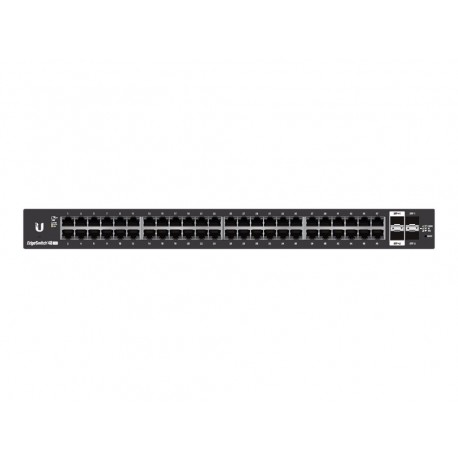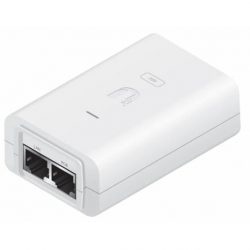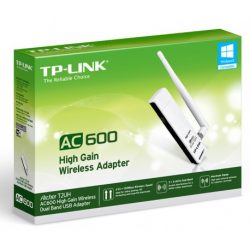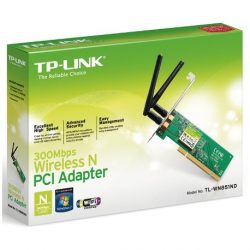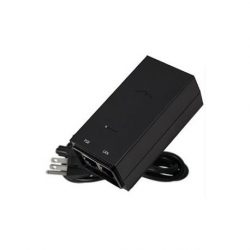Descripción
Switch Administrable EdgeMax Ubiquiti ES-48-LITE, 48 Puertos con POE Switching hasta 140Gbps 1RU
El conmutador de red administrado EdgeSwitch 48 Lite de 48 puertos de Ubiquiti Networks cuenta con 48 puertos Gigabit Ethernet para crear una red Ethernet de alta densidad de sistemas y teléfonos IP. Dos puertos SFP y dos puertos SFP + están disponibles para proporcionar conectividad de fibra para redes de almacenamiento donde las velocidades de transferencia de datos mejoradas son esenciales. Para el rendimiento, este conmutador soporta una capacidad de conmutación de 140 Gbps, asegurando que puede procesar grandes cantidades de datos en todos los puertos sin pérdida de paquetes. Aparte de estas características, viene con QoS para que pueda priorizar las aplicaciones sensibles a la latencia. Ubiquiti también ha construido una Interfaz de Configuración EdgeSwitch Lite que permite a los administradores configurar y supervisar las características del conmutador en una interfaz gráfica de usuario.
Tecnología de conmutación
EdgeSwitch Lite es un conmutador Gigabit totalmente gestionado, que ofrece un rendimiento robusto y un cambio inteligente para redes en crecimiento. Ofrece una extensa suite de funciones y protocolos de conmutación de nivel 2 avanzados. Además, proporciona capacidad de enrutamiento de Capa 3.
Rendimiento de conmutación
EdgeSwitch Lite ofrece la capacidad de reenvío para procesar simultáneamente el tráfico en todos los puertos a una velocidad de línea sin pérdida de paquetes. Por su total, sin bloqueo de rendimiento, este modelo de 48 puertos soporta hasta 70 Gbps.
Conectividad de fibra
EdgeSwitch Lite ofrece opciones de conectividad de fibra para sus redes en crecimiento. Incluye dos puertos SFP y dos puertos SFP +, que proporcionan hasta 10 Gbps de enlaces ascendentes.
Interfaz de usuario completa
Diseñada para una gestión conveniente, la interfaz de configuración de EdgeSwitch Lite permite a los administradores configurar y supervisar las características del conmutador en una interfaz gráfica de usuario. Para usuarios avanzados, una interfaz de línea de comandos (CLI) estándar del sector está disponible a través del puerto de consola serie, telnet y SSH.
Funcionalidad
EdgeSwitch Lite utiliza un sistema operativo que proporciona funciones básicas de conmutación y una variedad de características avanzadas, incluyendo:
MSTP / RSTP / STP
VLAN, VLAN privada, VLAN de voz
Agregar un link
Seguimiento de DHCP, IGMP Snooping
TACACS +, RADIUS, 802.1X, Filtrado MAC, ACL
DiffServ, CoS
Enrutamiento estático, enrutamiento basado en directivas
| Total Non-Blocking Throughput | 70 Gbps |
| Switching Capacity | 140 Gbps |
| Forwarding Rate | 104.16 Mpps |
| AC Power Consumption | 56 W max. |
| Power | 100 to 240 VAC, 50/60 Hz, universal input DC: 56 W, 25 to 16 V (with 2.5 mm DC power inline connector) |
| LED Indicators | RJ45 Data: Speed/Link/Activity SFP+/SFP Data: Speed/Link/Activity |
| Ethernet Networking Interfaces | 48 x 10/100/1000 Mbps RJ45 Ethernet ports 2 x 1/10 Gbps SFP+ Ethernet ports 2 x 1 Gbps SFP Ethernet ports |
| Management Interface | 1 x RJ45 serial port (Ethernet In/Out band) |
| Certification | CE, FCC, IC |
| Form Factor | 1RU rackmount |
| ESD/EMP Protection | Air: ±24 kV Contact: ±24 kV |
| Temperature | 23 to 104°F / -5 to 40°C |
| Humidity | 5 to 95% non-condensing |
| Shock and Vibration | ETSI300-019-1.4 Standard |
| Core Switching | ANSI/TIA-1057: LLDP-Media Endpoint Discovery (MED) IEEE 802.1AB: Link Layer Discovery Protocol (LLDP) IEEE 802.1D: Spanning Tree Compatibility IEEE 802.1S: Multiple Spanning Tree Compatibility IEEE 802.1W: Rapid Spanning Tree Compatibility IEEE 802.1Q: Virtual LANs with Port-Based VLANs IEEE 802.1p: Ethernet Priority with User Provisioning and Mapping IEEE 802.1X: Port-Based Authentication with Guest VLAN Support IEEE 802.3: 10BASE-T IEEE 802.3u: 100BASE-T IEEE 802.3ab: 1000BASE-T IEEE 802.1ak: Virtual Bridged Local Area Networks – Amendment 07: Multiple Registration Protocol IEEE 802.3ac: VLAN Tagging IEEE 802.3ad: Link Aggregation IEEE 802.3x: Flow Control IEEE 802.1D-2004: Generic Attribute Registration Protocol: Clause 12 (GARP) IEEE 802.1D-2004: Dynamic L2 multicast registration: Clause 10 (GMRP) IEEE 802.1Q-2003: Dynamic VLAN registration: Clause 11.2 (GVRP) RFC 4541: Considerations for Internet Group Management Protocol (IGMP) Snooping Switches RFC 5171: Unidirectional Link Detection (UDLD) Protocol |
| Advanced Layer 2 Specifications | Broadcast Storm Recovery Broadcast/Multicast/Unknown Unicast Storm Recovery DHCP Snooping IGMP Snooping Querier Independent VLAN Learning (IVL) Support Jumbo Ethernet Frame Support Port MAC Locking Port Mirroring Protected Ports Static MAC Filtering TACACS+ Voice VLANs Unauthenticated VLAN Internal 802.1X Authentication Server |
| Platform Specifications | DHCP Server – Maximum Number of Pools: 8 – Maximum Number of Leases (Total): 128 Routing – Number of Routes: 16 – Number of Routing Interfaces: 15 VLANs: 255 MAC Addresses: 8k MSTP Instances: 4 LAGs: 6 ACLs: 100 with 10 Rules per Port Traffic Classes (Queues): 8 |
| System Facilities | Event and Error Logging Facility Run-Time and Configuration Download Capability PING Utility FTP/TFTP Transfers via IPv4/IPv6 Malicious Code Detection BootP and DHCP RFC 2021: Remote Network Monitoring Management Information Base Version 2 RFC 2030: Simple Network Time Protocol (SNTP) RFC 2819: Remote Network Monitoring Management Information Base RFC 2865: RADIUS Client RFC 2866: RADIUS Accounting RFC 2868: RADIUS Attributes for Tunnel Protocol Support RFC 2869: RADIUS Extensions RFC 3579: RADIUS Support for EAP RFC 3580: IEEE 802.1X RADIUS Usage Guidelines RFC 3164: BSD Syslog Protocol |
| Management | Web UI Industry-Standard CLI IPv6 Management Password Management Autoinstall Support for Firmware Images and Configuration Files SNMP v1, v2, and v3 SSH 1.5 and 2.0 SSL 3.0 and TLS 1.0 Secure Copy (SCP) Telnet (Multi-Session Support) |
| Layer 3 Routing | Static Routing Policy-Based Routing |
| QoS | Access Control Lists (ACLs), Permit/Deny Actions for Inbound IP and Layer 2 Traffic Classification Based on – Time-Based ACL – Source/Destination IP Address – TCP/UDP Source/Destination Port – IP Protocol Type – Type of Service (ToS) or Differentiated Services (DSCP) Field – Source/Destination MAC Address – EtherType – IEEE 802.1p User Priority – VLAN ID – RFC 1858: Security Considerations for IP Fragment Filtering Optional ACL Rule Attributes – Assign Flow to a Specific Class of Service (CoS) Queue – Redirect Matching Traffic Flows Differentiated Services (DiffServ) – Classify Traffic Based on Same Criteria as ACLs – Mark the IP DSCP or Precedence Header Fields, Optional – Police the Flow to a Specific Rate with Two-Color Aware Support – RFC 2474: Definition of the Differentiated Services Field (DS field) in the IPv4 and IPv6 Headers – RFC 2475: An Architecture for Differentiated Services – RFC 2597: Assured Forwarding Per-Hop Behavior (PHB) Group – RFC 3246: An Expedited Forwarding PHB – RFC 3260: New Terminology and Clarifications for DiffServ Class of Service (CoS) Queue Mapping Configuration – AutoVoIP: Automatic CoS Settings for VoIP – IP DSCP-to-Queue Mapping – Configurable Interface Trust Mode (IEEE 802.1p, DSCP, or Untrusted) – Interface Egress Shaping Rate – Strict Priority Versus Weighted Scheduling per Queue |
| Dimensions | 17.4 x 1.7 x 11.3″ / 44.3 x 4.3 x 28.6 cm |
| Weight | 7.8 lb / 3.6 kg With Brackets: 8.0 lb / 3.7 kg |
| Packaging Info | |
|---|---|
| Package Weight | 9.5 lb |
| Box Dimensions (LxWxH) | 21.0 x 13.0 x 3.0″ |

